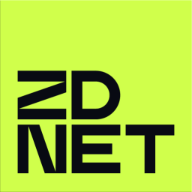In my office we have been running a 2012 Mac mini for years as our file server for all our studio files, to which 4 Macs connect via SMB. It's been running Mac OS Sierra for the last few years since Apple removed the server software from newer versions of Mac OS, and the file sharing on the recent OS versions wasn't good at all and so unreliable. It's connected to an OWC NAS unit with 4 WD Blue 3TB drives inside in RAID 0 formatted with Mac OS Journaled, this is running well and is only a couple of years old.
We are now wary of the age of the Mac Mini and think this hardware should be retired before it goes.
My question is has anyone had a similar situation and what upgrade path did you go down?
If I simply bought a new M1 mac mini have Apple now fine-tuned the file-sharing feature to use in our office environment? Or would I need to serve the files in a different way?
Thanks!
We are now wary of the age of the Mac Mini and think this hardware should be retired before it goes.
My question is has anyone had a similar situation and what upgrade path did you go down?
If I simply bought a new M1 mac mini have Apple now fine-tuned the file-sharing feature to use in our office environment? Or would I need to serve the files in a different way?
Thanks!





